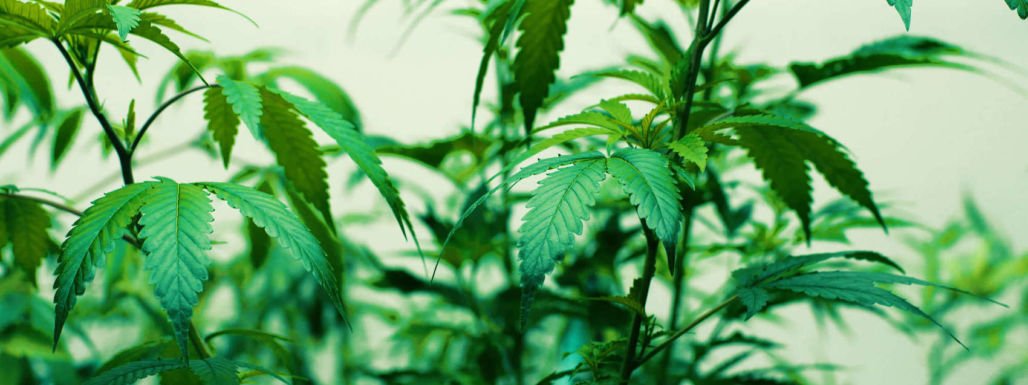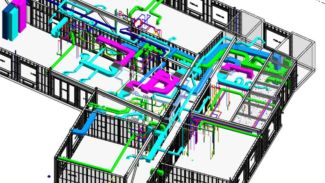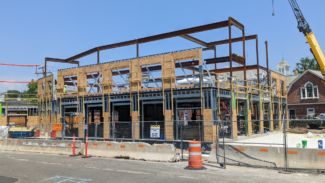Cannabis growers, farmers and agriculturalists (namely anyone in the agriculture industry) often share a similar hard-working, “can-do” mentality. From planting crops and working with animals to fixing equipment and spreading fertilizer, there’s a positive, community-minded idea that people who work in agriculture are known for pitching in and helping wherever needed.
While this is certainly valuable, this can-do spirit can sometimes get you in trouble when it enters the world of construction with multiple layers of oversight, inspections, and approvals needed to accomplish the simplest of tasks. This is especially true if you’re thinking about building a new facility or expanding a structure. Building codes and permit requirements are involved, and you may not be familiar the kind of design, materials, and equipment needed for a successful, cost-effective project.
A cannabis cultivation facility is no exception.
Business Insider labeled marijuana “the fastest-growing job sector in the U.S.” with the addition of almost 65,000 full-time positions in 2018 (and this doesn’t even include jobs that are related to the industry, such as marketing firms and lawyers).
What does this mean? Commercial marijuana cultivation is on the rise, especially since cannabis has been legalized for medical use in 33 states, and adults can purchase small amounts for recreational use in 11 states and the District of Columbia, including Maine, Massachusetts, and Vermont.
In an interview with Ganjapreneur, Luke Wilson, director of field operations for Canna Advisors, said, “Whether manufacturing indoors, or in a greenhouse, cannabis cultivation must be addressed for what it is — an industrial-agricultural manufacturing process.”
Like any agricultural crop, cannabis is a serious business that involves the right growing conditions, and that means the right cultivation facility design. In this blog post, we provide some tips on the best commercial grow room design plans, plus advice on best practices and other factors, such as technology and environmental controls, you should think about.
Before you continue, here’s a link to our most popular presentation on bidding projects and identifying costly details. Click here to watch.
6 Considerations for Optimal Commercial Grow Room Design Plans
1. Build a structure within a structure
It’s rare that a cannabis grow facility stands alone. Creating a structure within a structure provides another layer of protection against unwanted pests and potential outside contamination. In some cases, these rooms may be quite large, which means you need a building roof/ceiling span (such as a beam or bridge) that can accommodate the distance. Wood doesn’t offer this.
2. Understanding what your structure needs to support
A proper indoor grow facility is much more than just a bunch of hanging grow lights, which themselves can be heavy and bulky. You need to figure out if the structure you’re in — the warehouse or building — can support a smaller structure. In many cases, growers run out of space and start using the ceiling for storage so you want to ensure adequate room.
3. Consider the lateral movement of your structure
Earthquakes may not be too common in New England compared to California and other places around the world, but they do happen. (The Northeast States Emergency Consortium reports a total of 2,030 earthquakes have been felt starting from when earthquakes were first recorded until 2016. This number includes all New England states, plus New Jersey and New York.) This means you have to make sure the framing can handle all kinds of lateral forces — natural disasters included.
4. Location, location, location
Where should you build your marijuana grow facility? If you have a retail store, it might be helpful to think about the popular startup craft brewery model, where brewers find a type of warehouse space that can also accommodate customers. You might be looking for the least expensive location possible, but that’s often a mistake. Sometimes a cheap structure, such as an old mill building, means it’s dilapidated and run-down.
An ideal structure is a premanufactured warehouse with thick, concrete floors with ample overhead space. You also want to make sure you can easily transport equipment in and out of your building. Other factors to consider: good building security and a place without an unnecessary amount of unwanted traffic.
5. Use the right building materials
Cold-formed steel is an excellent choice for commercial grow room design plans because it is lightweight and noncombustible. Plus, cold-formed steel lends itself easily to modification, so you can add or remove walls if you want to change the layout or expand the structure down the line.
6. Consult the experts
If you’re going to build a new structure, or even if you’re going to expand an existing one, you want to find an architect who has done this before. The experts can answer your questions about building materials, security systems, competitively priced lighting, and more.
10 Other Grow Facility Factors to Consider
There are many other factors to keep in mind in addition to the design of your cultivation facility. From coverings and controls to airflow and technology, here are 10 other grow facility factors to consider:
- Pest control
Since regions vary when it comes to insects, it’s important to identify which potential pests might show up in your growing facility. Then you can figure out what control method works best for you. There are many control and prevention methods, such as physically trapping insects, placing filters on air intakes, and using pesticides. Cannabis Business Times also lists a number of “holistic approaches,” such as coconut water, essential oils, and powdered potassium silicate.
2. A sealed environment
A sealed environment refers to a room within the facility, meaning there is no direct access to the growing area without first entering another room or building. This allows greater control over growing conditions and can prevent outside elements (pests, sunlight, etc.) from adversely affecting the plants.
3. Separate, well-sealed rooms
We’ve already established that a sealed room is best, but why should you consider more than one? It may not be feasible depending on the layout and design of your facility, but an insect or fungus infestation could wipe out an entire growing room. Having more than one room reduces this risk.
4. Greenhouse coverings
If your indoor facility features a greenhouse, you’ll need the appropriate covering, which refers to the material that covers the frame. Your best bet is an option that doesn’t prevent the spread of ultraviolet light, but it’s best to consult with a greenhouse covering manufacturer to ensure that you select the proper material.
5. Employee contamination control
Your employees are crucial to the function and success of your grow facility, but they could also (unknowingly) cause the most damage due to potential contamination. Make sure you have standards and policies in place, such as personal hygiene practices and “cleans rooms” — places where employees can change clothes when entering the facility. You don’t want you (or your team) to track in potentially harmful pests, insects, or diseases.
6. Airflow & ventilation
According to Zambeza, a supplier of cannabis seeds, “Airflow within the growing environment helps to mimic outdoor and natural conditions, and serves many purposes, even helping to protect precious plants against external threats.” Methods include using oscillating fans, air exhaust systems, positive air pressure, High Efficiency Particulate Air (HEPA) filtration, or other filtration methods.
7. Environmental controls
This depends on where the growing facility is located and the type of plant you’re growing, but it’s important to think about heating and cooling systems, humidity levels, carbon dioxide levels, and odor control.
8. An efficient labor operation
You want a well-organized operation, which means the workflow of your facility should make sense. Are you going to water the plants by hand? Perhaps you should think about an irrigation system, which can cut down on labor. Movable racks can make it easier to adjust the layout as needed, especially if you want to expand the facility in the future. You can also save space with vertical growing systems.
9. Invest in the right technology
David Holmes, founder and CEO of Clade 9 in Los Angeles, explained that it’s important to implement the right resources from the beginning.
“Invest upfront in clean-room technology because state regulations will likely become more strict in terms of lab testing your material,” he explained in a Cannabis Business Times article. “Look into clean-room protocols such as disposable gowns, booties and point-of-entry technology such as air curtains.”
Other options for advanced technology include LED lighting and purification systems.
10. Expansion plans
It might be hard to picture your facility in 5 or 10 years, but if you think expanding might be in the cards, it’s important to keep this in mind as you build your structure. When in doubt, consult with the architectural and engineering experts who can guide you in the right design and layout direction.
If you have questions about using cold-formed steel in your cultivation facility design, or you’re looking for a quote, please contact us today. We look forward to talking with you and learning about your project.


